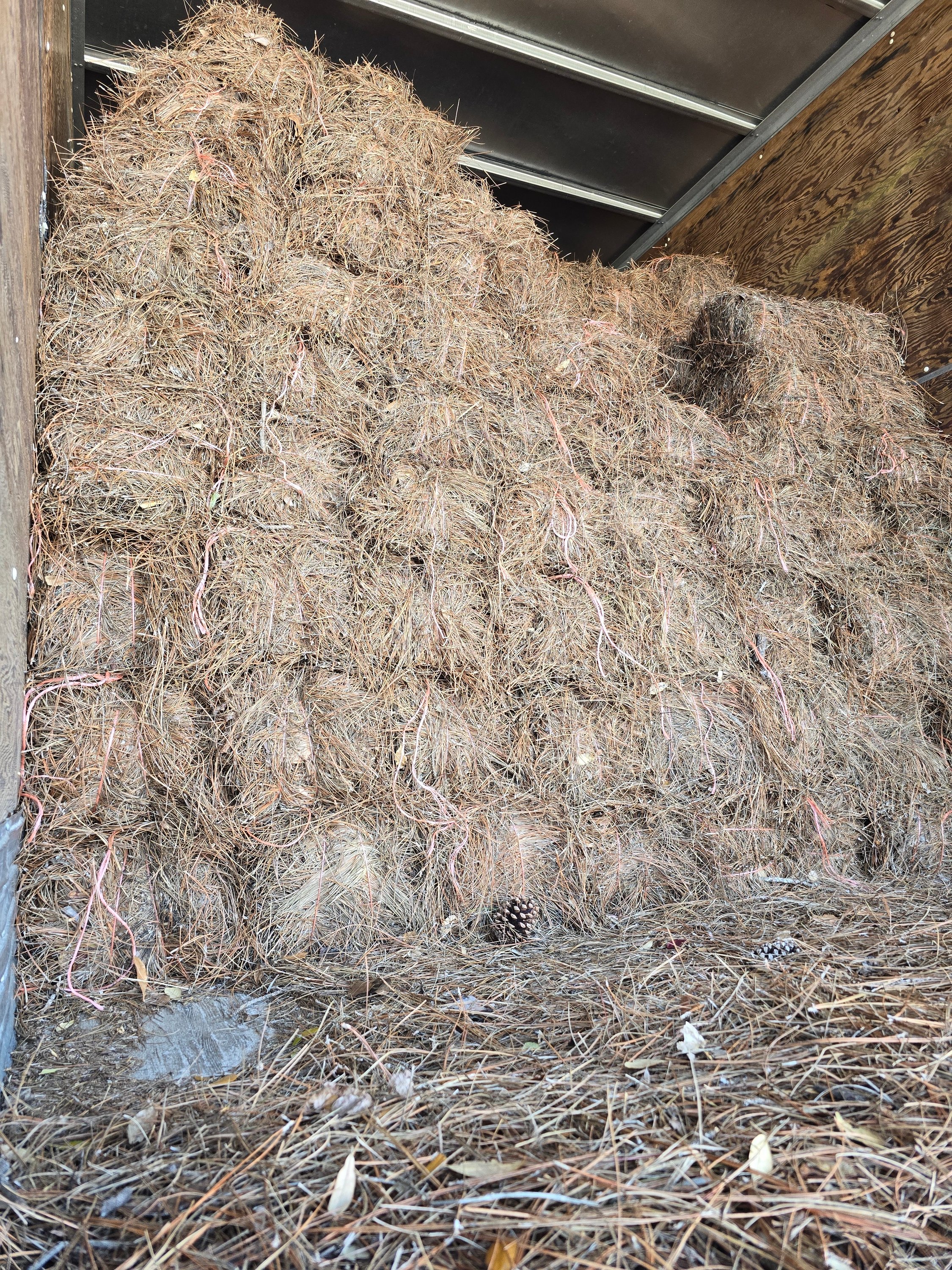
Longleaf vs. Slash vs. Loblolly Pine Straw: Which Is Best and Why?
Here’s your article with APA-style in-line citations and a full reference list with clickable links.
Pine straw is one of nature’s most useful gifts for landscaping. It’s lightweight, easy to spread, and helps plants thrive by keeping moisture in the soil and weeds out. But not all pine straw is the same. The three most common types—Longleaf, Slash, and Loblolly—each have their own strengths and weaknesses. So how do you tell them apart, and which one should you choose?
Let’s dig into the differences and find out which pine straw truly stands out.
What Is Pine Straw?
Pine straw is made from the fallen needles of pine trees. Instead of cutting down trees, landowners collect the needles from the forest floor, making pine straw a sustainable mulch option. It’s popular in the southeastern United States, especially in Florida, Georgia, and the Carolinas (Clemson Extension, 2021).
Pine straw helps:
- Retain soil moisture
- Suppress weeds
- Prevent erosion
- Add nutrients to the soil as it breaks down
Comparing the Three Types of Pine Straw
| Pine Type | Needle Length | Color | Durability | Common Uses |
|---|---|---|---|---|
| Longleaf | 8–18 inches | Cinnamon | High | Premium landscaping, erosion control |
| Slash | 6–11 inches | Georgia Red | Medium | General landscaping, golf courses |
| Loblolly | 5–9 inches | Light Brown | Low | Budget mulch, short-term use |
(Clemson Extension, 2021; Strong Forestry, n.d.)
🌲 Longleaf Pine Straw: The Premium Choice
Longleaf pine straw comes from the Pinus palustris tree. It’s known for its long, thick needles—some reaching up to 18 inches. These needles interlock well, forming a dense mat that stays in place even on slopes (Strong Forestry, n.d.).
Why It’s Great:
- Holds its color longer
- Doesn’t blow away easily
- Ideal for high-end landscaping
- Contains more resin, which deters insects
- Slow needle decay means less frequent replacement (Panhandle Agriculture, 2025)
Longleaf pine straw is often called “brown gold” because of its high value (Strong Forestry, n.d.).
🌲 Slash Pine Straw: The Middle Ground
Slash pine straw comes from the Pinus elliottii tree. It’s the most commonly sold type and is often labeled “standard pine straw” in garden centers (Morales Landscaping, 2025).
Why It’s Popular:
- Affordable and widely available
- Good for seasonal refreshes
- Used by landscapers, nurseries, and golf courses (NC State Extension, n.d.)
🌲 Loblolly Pine Straw: The Budget Option
Loblolly pine straw comes from the Pinus taeda tree. It has the shortest needles and breaks down faster than the other types (YardLearn, n.d.).
Why It’s Used:
- Cheapest option
- Good for short-term projects
- High yield per acre—up to 275 bales (Clemson Extension, 2021; YardLearn, n.d.)
🔍 How to Tell Them Apart
Needle Length:
- Longleaf: Very long (up to 18 inches)
- Slash: Medium (6–11 inches)
- Loblolly: Short (5–9 inches)
Color:
- Longleaf: Cinnamon, bronze, and sienna
- Slash: Bright reddish (Georgia red)
- Loblolly: Pale brown
Texture:
- Longleaf: Thick, fibrous, and interlocking
- Slash: Softer, less dense
- Loblolly: Thin and brittle
Performance:
- Longleaf: Best for erosion control and aesthetics
- Slash: Good for general use
- Loblolly: Best for short-term or budget projects
🌎 Sustainability and Economic Impact
Using pine straw is eco-friendly. The needles fall naturally, so trees aren’t harmed during harvesting. Longleaf pine straw also supports:
- Soil health: Adds organic matter as it breaks down
- Wildlife habitat: Longleaf forests are home to endangered species like the red-cockaded woodpecker (Mississippi State University, n.d.)
- Income for landowners: Longleaf straw can fetch higher prices, making it a profitable crop (Morales Landscaping, 2025)
🧠 Final Thoughts
Choosing the right pine straw depends on your goals. If you want long-lasting mulch with great coverage and color, go with Longleaf. If you’re looking for something affordable and decent, Slash is a good pick. And if you need a quick fix, Loblolly will do the job.
No matter which type you choose, pine straw is an innovative, sustainable way to keep your landscape looking great.
📚 References
- Clemson Extension. (2021). Pine Straw: Considerations for Production on Your Land
- Strong Forestry. (n.d.). Pine Straw Production
- NC State Extension. (n.d.). Managing Longleaf Pine Straw
- YardLearn. (n.d.). Types of Pine Straw
- Morales Landscaping. (2025). Longleaf vs. Slash Pine Straw
- Panhandle Agriculture. (2025). Managing Pine Stands for Straw Production
- Mississippi State University Extension. (n.d.). Pine Straw: Harvesting the Product


